Evolution Is Real | Answers To Claims and Questions

March Of Progress...
In today's world it's a sad state that so much of our population has neglected to acknowledge the wonderful discovery of human evolution. While the vast majority of those in the fields of science and academia accept the Theory of Evolution as a known and magnificent fact of nature, many of us in the regular world remain ignorant and uneducated as to all that evolution is, what it has to offer, and how proven it actually is.
I've made this lens in an attempt to help raise consciousness and awareness to evolution and to help show people that it is a proven occurrence (as proven as science allows, that is), that it is still occurring, and that it isn't a bad thing. In fact, evolution shows us that we are all beautifully connected in the tree of life -- every race and every species on earth.
While I understand that the theory of evolution can contradict with many peoples various religious beliefs of creationism, I would also like to show that evolution in itself is not -- I repeat, not -- anti-religious, a religion itself, or an ideology. It's simply a science. And it is no different from the science that has taught us of the theory of gravity, the germ theory of disease, the theory of relativity, and so on.
If after reading this anyone has any further questions concerning evolution, or any requests for further information that I could add to the lens, please leave your inquiries and suggestions at the guestbook at the end of the page.
How Does Evolution Work? Scientist Carl Sagan simplifies things for us
Books by Carl Sagan
On the Origin of Species by Charles Darwin
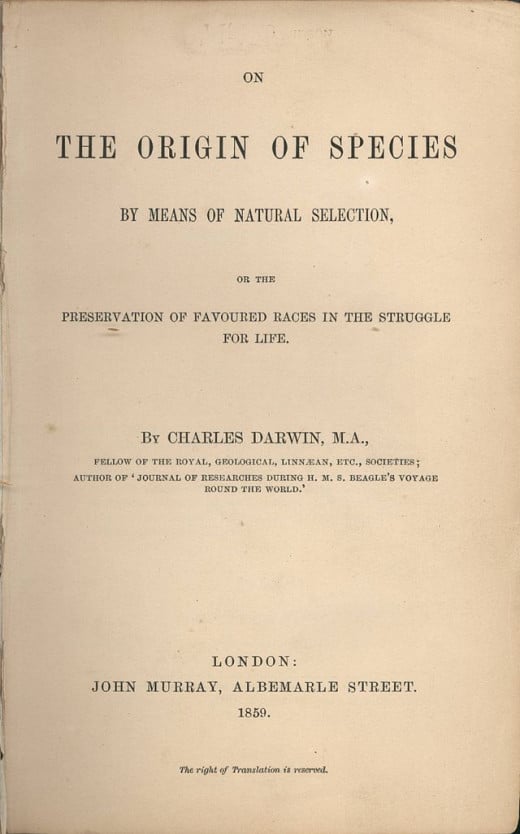
Charles Darwin's On the Origin of Species, published on 24 November 1859, is a work of scientific literature which is considered to be the foundation of evolutionary biology. Its full title was On the Origin of Species by Means of Natural Selection, or the Preservation of Favoured Races in the Struggle for Life. For the sixth edition of 1872, the short title was changed to The Origin of Species. Darwin's book introduced the scientific theory that populations evolve over the course of generations through a process of natural selection. It presented a body of evidence that the diversity of life arose by common descent through a branching pattern of evolution. Darwin included evidence that he had gathered on the Beagle expedition in the 1830s and his subsequent findings from research, correspondence, and experimentation.
Published amid a firestorm of controversy in 1859, this is a book that changed the world. Reasoned and well-documented in its arguments, it offers coherent views of natural selection, adaptation, the struggle for existence, survival of the fittest, and other concepts that form the foundation of evolutionary theory.
I Thought Evolution Was Only A Theory?
How can evolution be considered a fact if it's specifically called a theory? Isn't a theory just a guess?
This is a common misunderstanding of the scientific use of the word "Theory".
Colloquially (informally) the word Theory means only an idea or a guess -- this is the way people use it socially in their everyday lives:
"Johns theory that Superman could beat The Flash in a race around the Earths equator sounds pretty sound to me!"
In the field of science, a Theory is a set of empirical data, facts, propositions, or principles analyzed in their relation to one another and used to explain phenomena. Evolution is based on studied and tested facts and is believed as being fact (colloquially speaking, that is). It is virtually indisputable among those in the field of science.
"Johns theory of gravity appears to be true because we tested it, observed it, and all of our other studies of the natural world consistently match up with what the theory suggests!"
Scientifically speaking, gravity, relativity, quantum theory, germ theory, or the fact that you have a computer in front of you right now are all only theories because, while all evidence, examination, and observations suggest that it is so, science must remain open to the possibility that it's not -- no matter how improbable.
Shouldn't Both Sides Be Taught In School?
If evolution is taught, then shouldn't creationism be given equal time?
Evolution is a field of science based on scientific studies, scientific evidence, and it's findings are consistent and necessary in many other fields on science -- it is a necessity in properly understanding science as a whole.
Idea's of creationism are religious beliefs and are not supported by science, are not studied in science, acknowledged in science, or withstandable in any fields of science. They do not involve any actual science and thus are not equal to the scientific theory of evolution.
Furthermore, there is not just one belief in creationism, there are literally hundreds. All of which are equally unscientific and unsubstantiated.
Does Evolution Promote Immorality?
We're all animals anyway, right?
Many who argue against evolution believe that if we derive from animals then we should act like animals.
While there are no guidelines or commandments within evolution which could appropriately tell the evolving man how he should act toward his fellow man, it is still perfectly possible, feasible, and likely that humans evolved into morality because humans needed to become social animals in order to survive.
In a social setting, cooperation and even altruism lead to better relationships which can help the species as a whole. If the evolving man were to act malicious toward his peers by stealing, killing, cheating, and lying, then it would neither help him or the people he depends on. Without this natural morality the species would be incapable living together and hence incapable of surviving and reproducing to further the process of evolution. Without good ethics, primitive people would likely not have survived to evolve into the primates we are today.
Does Evolution Promote Racism?
When properly understood, evolution refutes racism. Before Darwin, people used typological thinking for living things, considering different plants and animals to be their distinct "kinds." This gave rise to a misleading conception of human races, in which different races are thought of as separate and distinct. Darwinism helps eliminate typological thinking and with it the basis for racism.
Genetic studies show that humans are remarkably homogeneous (of the same kind) genetically, so all humans are only one biological race. Evolution does not teach racism; it teaches the very opposite -- that all people of all colors are human.
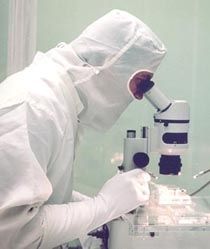
What Scientific Proof Is There For Evolution?
What studies have scientists done to prove evolution?
According to scientists in a variety of different fields, all evidence of evolution points to the same outcome. This evidence is extensive and consistent with what the Theory of Evolution entails and predicts with no exceptions proving otherwise.
Some of the evidences of evolution are as follows:
+ All life shows a fundamental unity in the mechanisms of replication, heritability, catalysis, and metabolism.
+ Common descent predicts a nested hierarchy pattern, or groups within groups. We see just such an arrangement in a unique, consistent, well-defined hierarchy, the so-called tree of life.
+ Different lines of evidence give the same arrangement of the tree of life. We get essentially the same results whether we look at morphological, biochemical, or genetic traits.
+ Fossil animals fit in the same tree of life. We find several cases of transitional forms in the fossil record.
+ The fossils appear in a chronological order, showing change consistent with common descent over hundreds of millions of years and inconsistent with sudden creation.
+ Many organisms show rudimentary, vestigial characters, such as sightless eyes or wings useless for flight.
+ Atavisms sometimes occur. An atavism is the reappearance of a character present in a distant ancestor but lost in the organism's immediate ancestors. We only see atavisms consistent with organisms' evolutionary histories.
+ Ontogeny (embryology and developmental biology) gives information about the historical pathway of an organism's evolution. For example, as embryos whales and many snakes develop hind limbs that are reabsorbed before birth.
+ The distribution of species is consistent with their evolutionary history. For example, marsupials are mostly limited to Australia, and the exceptions are explained by continental drift. Remote islands often have species groups that are highly diverse in habits and general appearance but closely related genetically. Squirrel diversity coincides with tectonic and sea level changes (Mercer and Roth 2003). Such consistency still holds when the distribution of fossil species is included.
+ Evolution predicts that new structures are adapted from other structures that already exist, and thus similarity in structures should reflect evolutionary history rather than function. We see this frequently. For example, human hands, bat wings, horse legs, whale flippers, and mole forelimbs all have similar bone structure despite their different functions.
+ The same principle applies on a molecular level. Humans share a large percentage of their genes, probably more than 70 percent, with a fruit fly or a nematode worm.
+ When two organisms evolve the same function independently, different structures are often recruited. For example, wings of birds, bats, pterosaurs, and insects all have different structures. Gliding has been implemented in many additional ways. Again, this applies on a molecular level, too.
+ The constraints of evolutionary history sometimes lead to suboptimal structures and functions. For example, the human throat and respiratory system make it impossible to breathe and swallow at the same time and make us susceptible to choking.
+ Suboptimality appears also on the molecular level. For example, much DNA is nonfunctional.
+ Some nonfunctional DNA, such as certain transposons, pseudogenes, and endogenous viruses, show a pattern of inheritance indicating common ancestry.
+ Speciation has been observed.
+ The day-to-day aspects of evolution -- heritable genetic change, morphological variation and change, functional change, and natural selection -- are seen to occur at rates consistent with common descent.
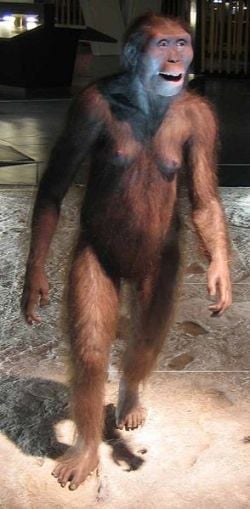
Where Are The Missing Links?
Aren't scientists looking for a "missing link" to prove evolution?
Scientists are not looking for a particular "missing link" in order to prove evolution.
You will not find a half man, half monkey, centaur-esque creature with an animals lower-half on one end and a torso similar to a humans on the other -- this does not fit into the Theory of Evolution. "Missing Links" are found though, and they are called "transitional fossils". What scientists find in these transitional fossils are "apelike" creatures with a few properties similar to current man, current men with similar properties to "apelike" creatures, and creatures which are indecipherable either way. Each of these missing links have a name (ex. Homo Erectus, Homo Habilis, or Homo Sapien) yet we are all in the same chain of species. We are still "monkeys" of a sort because we are primates.
There is a fine transition between modern humans and australopithecines and other hominids. The transition is gradual enough that it is not clear where to draw the line between human and not.
Examples:
Australopithecus afarensis (from 3.9 to 3.0 million years ago) -- Its skull is similar to a chimpanzee's, but with more humanlike teeth.
Australopithecus africanus (3 to 2 million years ago) -- Its brain size was slightly larger than A. afarensis, and its teeth yet more humanlike.
Homo habilis (2.4 to 1.5 million years ago) -- This is similar to the others, but used tools and had a larger brain and less projecting face.
Homo erectus (1.8 to 0.3 million years ago) -- Its brain size averaged about 900 cc in early homo erectus and 1,100 cc in later ones.(Modern human brains average 1,350 cc.)
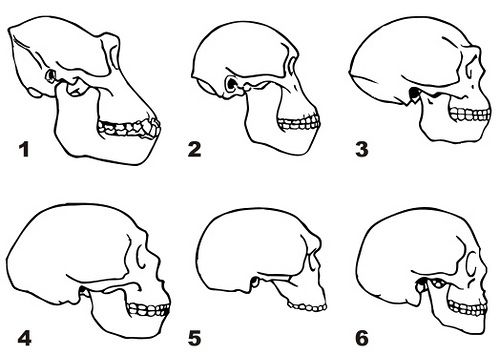
(1. Gorilla 2. Australopithecus 3. Homo erectus 4. Neanderthal (La Chapelle aux Saints) 5. Steinheim Skull 6. Euhominid)
It boils down to what do we consider the fossil to be: Is this more 'man'? Or is this more 'monkey'? It has to be grasped how incomprehensibly long this change takes place in time. Imagine what all has occurred in just a few hundred years, then multiply that by a thousand, and so on. If you think about it without the labels of "man" and "monkey," and focus just on the changes that make us into the monkey we are today then perhaps it will help make it easier to fully grasp the situation.
Do Some Scientists Dispute Evolution?

1997 Gallup Poll
It's actually extremely rare to find modern scientists (scientists born after Darwin's "On The Origins of Species" was published) who dispute evolution. It's, in fact, close to impossible. This is because evolution is the only viable explanation that can fully account for observations in the fields of biology, paleontology, anthropology, and other fields.
+ In 1987 an estimate was found that only 700 scientists, out of a total of 480,000 earth and life scientists, gave credence to the belief of creationism. This is to say: 479,300 believed in evolution while only 700 didn't.
+ In 1991 a Gallup poll of Americans found that only 5% of scientists identified themselves as creationists.
+ The U.S. National Academy of Sciences has stated that intelligent design "and other claims of supernatural intervention in the origin of life" are not science because they cannot be tested by experiment, do not generate any predictions, and propose no new hypotheses of their own.
+ In September of 2005, 38 Nobel Prize winners issued a statement saying "Intelligent design is fundamentally unscientific; it cannot be tested as scientific theory because its central conclusion is based on belief in the intervention of a supernatural agent."
+ In October of 2005, a coalition representing more than 70,000 Australian scientists and science teachers issued a statement saying "intelligent design is not science" and calling on "all schools not to teach Intelligent Design as science, because it fails to qualify on EVERY COUNT as a scientific theory."
+ In 1986, an amicus curiae brief, signed by 72 US Nobel Prize winners, 17 state academies of science and 7 other scientific societies, asked the US Supreme Court to reject a Louisana state law requiring the teaching of creationism (which the brief described as embodying religious dogma). This was the largest collection of Nobel Prize winners to sign anything up to that point, providing the "clearest statement by scientists in support of evolution yet produced."
+ The American Association for the Advancement of Science (the world's largest general scientific society, with more than 130,000 members and over 262 affiliated societies and academies of science including over 10 million individuals) has made several statements and issued several press releases in support of evolution.
+ The prestigious United States National Academy of Sciences that provides science advice to the nation, has published several books supporting evolution and denouncing creationism and intelligent design.
+ One of the earliest resolutions in support of evolution was issued by the American Association for the Advancement of Science in 1922, and readopted in 1929.
+ In May 1966 Hermann J. Muller circulated a petition entitled "Is Biological Evolution a Principle of Nature that has been well established by Science?":
"There are no hypotheses, alternative to the principle of evolution with its 'tree of life' that any competent biologist of today takes seriously. Moreover, the principle is so important for an understanding of the world we live in and of ourselves that the public in general, including students taking biology in high school, should be made aware of it, and of the fact that it is firmly established, even as the rotundity of the earth is firmly established."
This manifesto was signed by by 177 of the leading American biologists, including:
- Nobel Prize Winner George G. Simpson of Harvard University.
- Nobel Prize Winner Peter Agre of Duke University.
- Carl Sagan of Cornell.
- John Tyler Bonner of Princeton.
- Nobel Prize Winner George Beadle.
- President of the University of Chicago
- Donald F. Kennedy of Stanford University, former head of the United States Food and Drug Administration.
+ In the fall of 1972 the American Association for the Advancement of Science (AAAS) passed a resolution that stated, in part, "the theory of creation ... is neither scientifically grounded nor capable of performing the rules required of science theories."
+ The United States National Academy of Sciences also passed a similar resolution in the fall of 1972.
+ In 1977 a statement on evolution called "A Statement Affirming Evolution as a Principle of Science" was published and signed by Nobel Prize Winner Linus Pauling, Isaac Asimov, Nobel Prize Winner George G. Simpson, Caltech Biology Professor Norman H. Horowitz, Ernst Mayr, and others.
+ To date, there are no scientifically peer-reviewed research articles that disclaim evolution listed in the scientific and medical journal search engine PubMed.
+ Just for kicks, the National Center for Science Education produced a petition called "Project Steve" in support of evolution, where only scientists named "Steve" or some variation (including Stephen, Stphanie, and Stfan) would be eligible to sign. As of July 2010, 1139 scientists named Steve had endorsed the petition.
Why Aren't Humans Still Evolving?
If evolution is real, why aren't we still evolving?
According to recent studies, we are still evolving!
+ Analysis of variation in the human genome indicates that genes associated with brain size have evolved over approximately the last 37,000 years and 5800 years.
+ Sickle-cell resistance has evolved to be more prevalent in areas where malaria is more common.
+ Lactose tolerance has evolved in conjunction with cultural changes in dairy consumption.
+ Some humans have recently acquired mutations which confer resistance to AIDS and to heart disease.
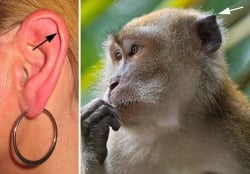
If We Evolved, Then Shouldn't We Still Have Traces Of Our Ancestors In Us?
Vestigial Organs
We do have traces of our primitive ancestors within us still. Some of these traces are large and some are microscopic. If we have a bone, a tooth, or any other useless organs (useless to us!) in our bodies then chances are they are the evolutionary baggage of our great great great great great great great great great(etc.) ancestors! We call these vestigial organs. Some of which include:
+ Goosebumps - For an animal (such as a cat) goosebumps are used to erect the hairs on our bodies. This is done A.) to be used for insulation in cold environments, or B.) to make our bodies fluff up to appear larger and more threatening to possible predators when we're in danger. This is why we get goosebumps when we're cold and when we're scared. They're useless to us now, of course, but for our more hairy ancestors they probably came in pretty handy.
+ Wisdom teeth - Your equally useless (and often harmful) wisdom teeth are the leftovers from our ancestors who had much large jaws and many more teeth to help them grind down plant tissue. As human diets changed, smaller jaws gradually evolved, yet the third molars, or "wisdom teeth", still commonly develop in human mouths. Today (thanks to evolutions tireless efforts at doing away with the nonsense) about 35% of the population do not develop wisdom teeth at all!
+ The Appendix - The vermiform appendix is a vestige of the cecum, an organ that would have been used to digest cellulose by humans' herbivorous ancestors. Today our appendix doesn't have much use at all but they do have the unpleasant side-effect of becoming infected. Luckily, since we have no real need of the appendix now, we can have it removed.
+ The Tailbone - The coccyx, or tailbone, is the remnant of a lost tail. All mammals have a tail at one point in their development; in humans, it is present for a period of 4 weeks, during stages 14 to 22 of human embryogenesis. This tail is most prominent in human embryos 31-35 days old. The tailbone, located at the end of the spine, has lost its original function in assisting balance and mobility, though it still serves some secondary functions, such as being an attachment point for muscles, which explains why it has not degraded further.
+ Third Eyelid - The plica semilunaris is a small fold of tissue on the inside corner of the eye. It is the vestigial remnant of the nictitating membrane (the "third eyelid") which is present in other animals such as birds, reptiles, and fish. It is rare in mammals, mainly found in monotremes and marsupials. Its associated muscles are also vestigial. The plica semilunaris of Africans and Indigenous Australians are slightly larger than in other peoples. Only one species of primate, the Calabar Angwantibo, is known to have a functioning nictitating membrane.
+ Palmaris Muscle - Our ancestors used this for climbing and hanging. Only 11% of the human population is still born with this muscle.
+ The Palmar Grasp Reflex - The palmar grasp reflex is supported to be a vestigial behavior in human infants. When placing a finger or object to the palm of an infant, it will securely grasp it. This grasp is found to be rather strong. Some infants -- 37% according to a 1932 study -- are able to support their own weight from a rod, although there is no way they can cling to their mother. The grasp is also evident in the feet too. When a baby is sitting down, its prehensile feet assume a curled-in posture, much like what is observed in an adult chimp. An ancestral primate would have had sufficient body hair to which an infant could cling unlike modern humans, thus allowing its mother to escape from danger, such as climbing up a tree in the presence of a predator without having to occupy her hands holding her baby.
+ Wiggling of the Ears - The ears of a most monkeys have far more developed muscles than those of humans and therefore have the capability to move their ears to better hear potential threats. Humans and other primates however have ear muscles that are minimally developed and non-functional, yet still large enough to be identifiable. In humans there is variability in these muscles, such that some people are able to move their ears in various directions. In such primates the inability to move the ear is compensated mainly by the ability to turn the head on a horizontal plane, an ability which is not common to most monkeys -- a function once provided by one structure is now replaced by another.










